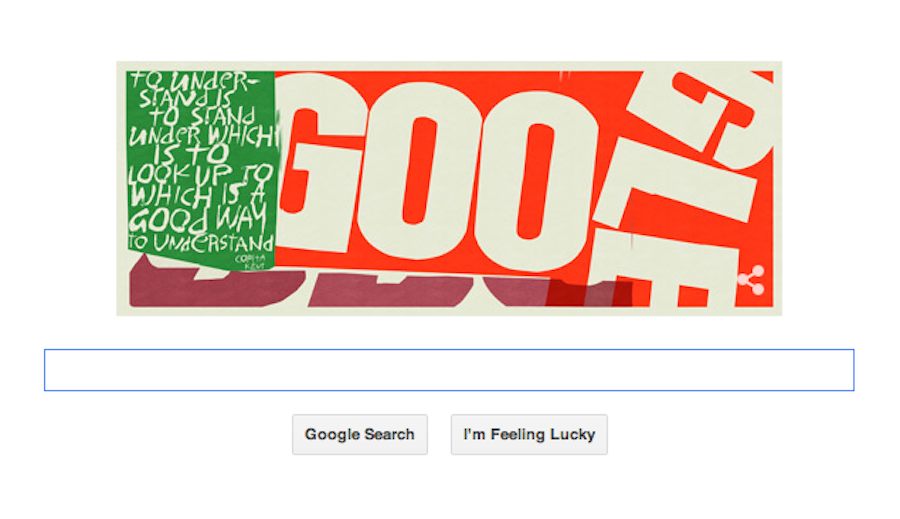Corita Kent: Artist and nun. What was the message behind the art?
Loading...
Google reminded us Thursday to find zeal in the commercial messages that bombard us every day.
Corita Kent, whose life and work inspired Thursday's Google Doodle, drew on popular culture to spread her own spiritually inspired messages in her art.
Also known as Sister Mary Corita, the nun-turned-internationally-renowned-artist, gained popularity for her vibrant serigraphs during the 1960s and 1970s. She ran the art department at Immaculate Heart College in Los Angeles, where she was a Sister of the Immaculate Heart of Mary until 1968 when she left the Order and moved to Boston.
Her serigraphs are not only famous for striking visual appeal that nods to popular modern symbols and slogans, but for the messages she extracted from them.
"Corita's art reflects her spirituality, her commitment to social justice, her hope for peace, and her delight in the world that takes place all around us," the Corita Art Center website says.
A Los Angeles Times review of her exhibits described the activist nun's work as "visually jarring, conceptually astute and socially engaged."
Kent would find inspiration in advertisements at the supermarket, on the street, or in newspapers
"Attracted to the impossible promises and extraordinary satisfactions put forth by ads, Corita casually borrowed their easy-to-read graphics, leaving behind the specific consumer goods they were designed to sell. Her works transform bold logos and catchy visual jingles into joyous, pointed appeals to common human values.
From General Mills, Corita took the general idea of goodness, which the "Big G" was said to stand for. From Wonder bread, she appropriated an abstract sense of wonder, leaving the bland, mass-produced bread behind. Elsewhere, Esso gasoline ads fuel individual desire, unleashing the untapped power within people."
The Los Angeles Times noted that her work often drew on Christian themes and that her words bespoke an "edgy optimism" during "tumultuous times."
The nun's heyday followed the liberalizing of the Catholic Church with Vatican II, and her work reflects this "radical openness," according to the Times: "Dispensing with dogma in favor of forging grass-roots communities based in earthly needs, her works give vivid shape to a sweeping commitment to human responsibility and dignity."
Kent created more than 400 serigraphs in 18 years, according to the Corita Art Center.
Born Frances Elizabeth Kent in Fort Dodge, Iowa, she worked primarily in Los Angeles and Boston.
The Google Doodle appears on the day when Kent (1918-1986) would have turned 96.







